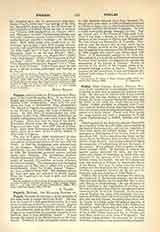

Foggia, DIOCESE OF (FODIANA), in the province of the same name in Apulia (Southern Italy). The city is in the heart of a rich agricultural center, in a vast plain between the rivers Cervaro and Celone. It grew up about the church of the Madonna dei Sette Veh, today the cathedral, built in 1072 by Robert Guiscard. Foggia is so named from the swampy character of the territory, toga or fogies signifying “marsh”. It later became the capital of the district known as the Capitanata. Frederick II built an imperial fortress there.
In 1254 Manfred defeated there Pope Innocent IV, though in the same place, in 1266, he himself submitted to Charles of Anjou, who in 1268 destroyed the city for taking part with the unfortunate Conradino. In 1781 a severe earthquake greatly damaged the city. Foggia formed part of the Diocese of Troia until 1855, when it was made a diocese by Pius IX, comprising territory of the Dioceses of Siponto and Manfredonia. The first bishop was Bernardino M. Frascolla. Situated so near the ancient city of Arpi, which had a bishop, Pardus, as early as 314, the Bishops of Troia may be considered as successors of the Bishops of Arpi. In 1907 Foggia was united ceque principaliter with Troia. It is immediately subject to the Holy See. The cathedral, a remarkable architectural monument, has been often restored and enlarged; it contains the mausoleum of the Princes of Durazzo. Worthy of mention is the church of the Crosses, which is approached through a series of chapels. Foggia has 9 parishes, 81,000 inhabitants, 2 male and 8 female educational institutions, 3 religious houses of men, and 9 of women.
U. BENIGNI

